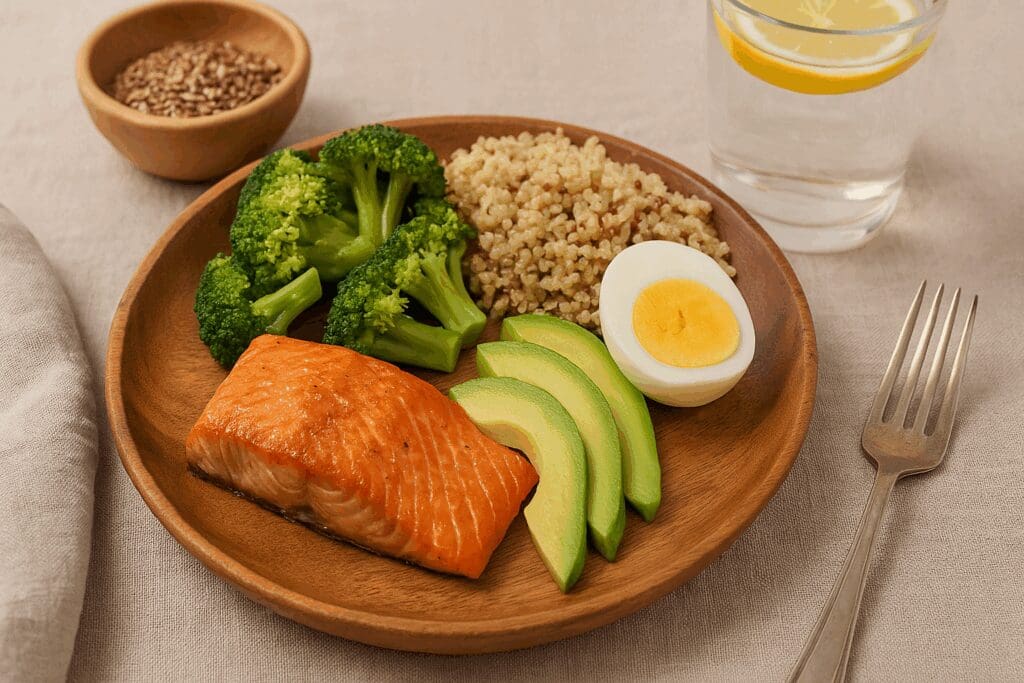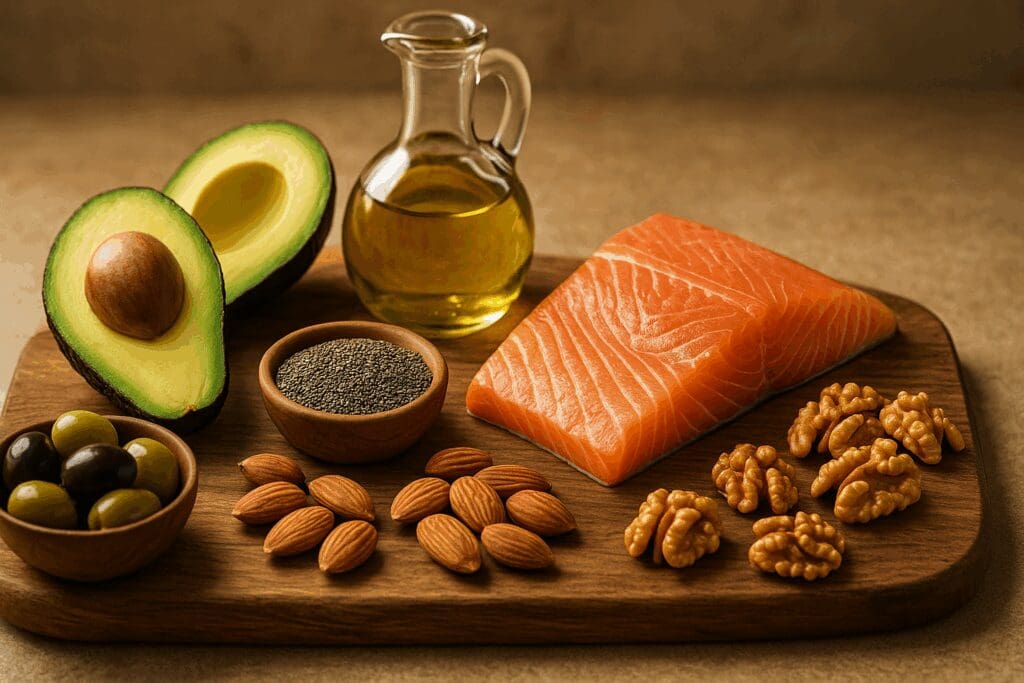Introduction: Why What Women Eat Every Day Truly Matters
Health is not built in a day, nor is it the result of a single food choice. Rather, it is the outcome of consistent, intentional decisions that fuel the body with the nutrients it needs to perform optimally across physical, cognitive, and emotional dimensions. What a woman eat on a daily basis holds immense power to either support her energy, focus, hormonal health, and resilience—or to undermine them gradually over time. While the nutritional needs of men and women often overlap, the physiological intricacies of the female body require a more nuanced, personalized approach to diet. Women experience monthly hormonal fluctuations, reproductive transitions, and bone density challenges that necessitate strategic nutritional planning for lifelong vitality.
From early adulthood through menopause and beyond, every phase in a woman’s life introduces new metabolic priorities. Unfortunately, many eating patterns adopted by women—due to diet culture, misinformation, or time constraints—fall short of delivering the essential vitamins, minerals, and macronutrients required to sustain balanced energy and prevent chronic disease. It is not enough to avoid junk food or count calories. Women need to embrace whole foods, understand nutrient synergy, and tailor their diets to reflect their hormonal cycles and health goals. By grounding daily choices in evidence-based nutrition strategies, women can reclaim control over their wellbeing and strengthen their capacity to thrive in the face of modern challenges.
This article offers in-depth, practical guidance rooted in the science of female physiology, hormonal health, and sustainable eating. It will explore vital nutrition rules every woman should adopt to stay energized and strong—not just for today, but for the long haul.
You may also like: 10 Essential Nutrition Rules to Follow for a Healthy Diet for Women in 20s

What a Woman Eat Affects Hormonal Balance Every Day
Hormones govern much of how women feel and function—from sleep quality and appetite to mood, skin health, and reproductive cycles. Even subtle imbalances can lead to fatigue, irritability, weight changes, or irregular periods. And while stress and environmental toxins play a role in hormonal disruption, the food a woman eat is one of the most powerful determinants of hormonal equilibrium. Essential fatty acids, complex carbohydrates, and amino acids are not just nutrients—they are raw materials the body uses to synthesize hormones.
Omega-3 fatty acids, found in fatty fish like salmon, sardines, and mackerel, are critical for producing anti-inflammatory eicosanoids and supporting the adrenal glands. These healthy fats also regulate cortisol, the stress hormone, and help buffer against hormonal chaos triggered by chronic stress. Additionally, the cruciferous vegetable family—broccoli, kale, cauliflower, and Brussels sprouts—contains compounds like sulforaphane and indole-3-carbinol that enhance the liver’s ability to detoxify excess estrogen. This is particularly beneficial for women with symptoms of estrogen dominance such as breast tenderness, heavy periods, and mood swings.
Protein, especially from varied sources such as legumes, lean meats, eggs, and fermented soy, supports the endocrine system by delivering the amino acids needed to manufacture hormones and enzymes. B vitamins, particularly B6 and B12, along with magnesium and zinc, help regulate ovulation, PMS symptoms, and energy production. Women who frequently skip meals or restrict food intake under the guise of diet culture may inadvertently trigger imbalances that disrupt menstrual cycles and dampen thyroid function. Eating female-specific nutrients in adequate amounts—and on a consistent schedule—promotes internal harmony, clearer skin, and more stable moods throughout each month.
To maintain hormonal balance over time, women should aim to create meals that combine healthy fats, protein, and fiber-rich carbohydrates. This trio ensures a slower digestion rate, steadier blood sugar, and a more even hormonal cascade. Avoiding endocrine disruptors such as refined sugar, trans fats, and processed soy isolates also helps preserve the body’s natural hormonal rhythm.

Eating Female-Friendly Foods for Optimal Energy and Performance
Energy isn’t just about sleep or caffeine—it’s about how efficiently your cells produce ATP, the body’s energy currency. This process is directly influenced by the nutrients absorbed from the foods a woman eat throughout the day. Consuming adequate carbohydrates, protein, and fat in the right balance ensures that the body maintains steady glucose levels, prevents adrenal burnout, and minimizes mood crashes or brain fog.
Complex carbohydrates, such as quinoa, steel-cut oats, sweet potatoes, and legumes, provide a slow and sustained release of glucose, fueling the brain and muscles without the spike-and-crash cycle associated with refined sugars. These carbohydrates also supply fiber, which supports gut health and lowers inflammation—a key contributor to energy loss in many women. Including a serving of protein with each meal—whether from tofu, fish, or pasture-raised chicken—helps reduce appetite fluctuations and increases alertness by promoting the production of dopamine and norepinephrine.
Fat, long demonized in mainstream dieting, is essential for energy regulation. Medium-chain triglycerides from coconut, monounsaturated fats from olive oil and avocados, and polyunsaturated fats from flax and chia seeds offer fuel that supports sustained cognition and endurance. Furthermore, micronutrients like iron, vitamin C, B vitamins, and magnesium are crucial for cellular respiration and mitochondrial function. Deficiencies in these nutrients can cause subtle but pervasive fatigue, even when caloric intake appears sufficient.
The synergy between diet and circadian rhythm should also be considered. Eating heavier meals late at night can impair digestion and sleep, leading to next-day sluggishness. Instead, women benefit from front-loading nutrition during the day—especially breakfast, which should never be skipped. A high-protein, high-fiber breakfast primes the metabolism, reduces cravings, and boosts mental clarity. Drinking enough water is another overlooked aspect of energy management. Even mild dehydration reduces physical performance and cognitive speed, making consistent hydration a non-negotiable element of daily nutrition.

Why What a Woman Eat During Each Life Stage Matters
Nutritional needs evolve with age, and the best diet for a 25-year-old may not serve a 55-year-old equally well. From menarche through menopause and into senior years, female physiology undergoes shifts that affect metabolism, bone density, mood, and cardiovascular health. Tailoring dietary choices to life stages ensures that a woman eat to meet the specific challenges of each chapter, preventing deficiencies and supporting graceful aging.
During the childbearing years, iron, folate, and omega-3s are especially important. Menstruation increases iron losses, which, if not replenished, can lead to anemia, fatigue, and weakened immunity. Leafy greens, lentils, and iron-rich animal proteins like liver or grass-fed beef can restore optimal levels. Folate—found in asparagus, legumes, and citrus—supports DNA synthesis and is vital for fetal development. For women who are pregnant or trying to conceive, choline and iodine also become crucial for brain and thyroid development in the fetus.
As women enter their 40s and 50s, metabolism begins to shift and bone density gradually declines. Calcium, magnesium, vitamin D, and vitamin K2 become priority nutrients to maintain skeletal health. Dairy products, fortified plant milks, leafy greens, and fermented foods provide this combination naturally. Simultaneously, a slight reduction in total caloric intake paired with increased protein and resistance training helps preserve lean muscle mass, which supports metabolism and joint stability.
After menopause, estrogen levels fall, increasing the risk of cardiovascular disease and cognitive decline. A Mediterranean-style diet, rich in monounsaturated fats, whole grains, and vegetables, has been shown to reduce these risks. In this phase, phytoestrogens from foods like flaxseed and fermented soy may offer natural support. At the same time, sodium should be moderated to protect blood pressure, and hydration becomes even more important as the body’s thirst signals weaken with age.
Each phase of life presents new nutritional terrain, and there is no universal roadmap. However, with awareness and regular adjustments, a woman eat to not only meet basic needs but to truly flourish at every age.
The Best Practices for Ensuring Nutrient Absorption in What a Woman Eat
It’s not just about what a woman eat—it’s about what her body can absorb. Even a meticulously planned diet can fall short if nutrients aren’t properly assimilated. Digestive efficiency, food combinations, gut health, and even stress levels influence nutrient absorption in profound ways. For this reason, eating female-focused meals should also mean optimizing digestion and biochemical uptake of critical vitamins and minerals.
To begin with, digestion starts in the mouth. Chewing thoroughly not only breaks food into smaller particles but also triggers enzyme release from saliva that kickstarts the breakdown of carbohydrates. Rushed eating habits, common among busy women juggling multiple responsibilities, compromise this foundational step. Eating slowly and mindfully enhances not only satisfaction but also digestive readiness, leading to more complete nutrient absorption.
The gut microbiome—the trillions of bacteria living in the digestive tract—also plays a key role in determining how effectively nutrients are extracted from food. A diverse and balanced microbiome improves the synthesis and absorption of B vitamins, vitamin K, and short-chain fatty acids. Fermented foods like kimchi, yogurt, kefir, and sauerkraut introduce beneficial bacteria, while prebiotic-rich foods such as onions, garlic, and asparagus feed them. When a woman eat with microbiome health in mind, she enhances her body’s ability to access the full potential of her diet.
Food pairing is another crucial element. For example, vitamin C boosts iron absorption from plant-based sources, making it advantageous to pair lentils or spinach with citrus fruits or bell peppers. Fat-soluble vitamins—A, D, E, and K—require dietary fat for absorption, so adding avocado or olive oil to a salad improves the uptake of these essential nutrients. Conversely, excessive caffeine or calcium intake with iron-rich meals can inhibit absorption, as can certain medications or gut imbalances.
Finally, chronic stress, which triggers cortisol elevation and sympathetic nervous system dominance, can impair digestive function by reducing enzyme and stomach acid secretion. Practices such as deep breathing before meals, eating in a relaxed environment, and taking digestive enzymes when necessary can improve nutrient utilization. True nourishment is not measured by intake alone, but by how effectively the body receives and uses what it is given.

Smart Carbohydrate Choices Every Eating Female Should Understand
Carbohydrates have long been misunderstood, vilified in trendy diets that promise fast results but often sacrifice metabolic and hormonal health in the process. For women, the right carbohydrates are a key component of balanced eating—not just a source of fuel, but a foundational nutrient for serotonin production, adrenal stability, and thyroid function. The key lies in selecting smart carbohydrates and understanding their role within a woman eat pattern.
Whole, unprocessed carbohydrates—such as sweet potatoes, brown rice, legumes, oats, and quinoa—deliver steady energy along with fiber, minerals, and antioxidants. These foods digest more slowly than refined sugars, helping maintain stable blood sugar and reducing the likelihood of cravings or emotional eating. Complex carbs also promote satiety and provide fuel for the brain, which relies heavily on glucose for focus, memory, and creativity.
On the other hand, simple carbohydrates like pastries, white bread, and sugary drinks spike insulin levels, leading to energy crashes and fat storage—particularly around the midsection. Women with conditions such as PCOS or insulin resistance are especially sensitive to these fluctuations, and poor carbohydrate choices can worsen symptoms. Rather than eliminate carbs entirely, the goal should be strategic selection, proper portioning, and pairing with protein and fat for optimal glycemic control.
During the luteal phase of the menstrual cycle—the two weeks leading up to menstruation—some women experience reduced insulin sensitivity and increased cravings. This is a time when focusing on high-fiber, low-glycemic carbs can help regulate mood and appetite. Carbohydrates also support the production of serotonin, a neurotransmitter associated with happiness and emotional balance. Thus, removing them from the diet altogether may undermine mental and hormonal well-being.
Carbohydrate timing matters too. Many women benefit from eating more carbs earlier in the day when insulin sensitivity is highest and reducing intake in the evening to support better sleep and metabolic flexibility. The quality, not just the quantity, of carbohydrates should shape daily food choices. When a woman eat carbs with intention and knowledge, they become tools of nourishment rather than obstacles to be feared.

Protein Priorities: What Every Eating Female Needs to Know
Protein is the structural building block of muscle, hormones, enzymes, and immune cells, making it indispensable to every woman’s daily nutritional plan. Despite its importance, many women fall short of their protein needs, especially when following plant-based diets or caloric restrictions. Prioritizing adequate protein is not just about maintaining lean mass—it’s about regulating appetite, supporting detoxification, and aging with strength.
The average woman needs between 0.8 to 1.2 grams of protein per kilogram of body weight per day, depending on activity levels, life stage, and overall goals. For those engaging in resistance training, recovering from illness, or experiencing menopause, this requirement may increase further. When spread evenly across meals, protein enhances satiety and prevents the blood sugar spikes that often result from carb-heavy eating.
High-quality protein sources include eggs, poultry, fish, Greek yogurt, tempeh, tofu, quinoa, and legumes. Combining different plant proteins ensures a complete amino acid profile for those avoiding animal products. Collagen, while not a complete protein, offers targeted benefits for joint health, skin elasticity, and gut repair—areas of concern for many aging women. Including a variety of protein types can address both general and specific needs across the lifespan.
Women often make the mistake of consuming most of their protein at dinner, leaving breakfast and lunch imbalanced. A protein-rich breakfast—such as eggs with vegetables or a smoothie made with protein powder, greens, and nut butter—helps kickstart metabolism, reduce cravings, and support better decision-making throughout the day. Protein also facilitates the production of glutathione, the body’s master antioxidant, and supports healthy liver function.
Supplemental protein powders can help meet needs when convenience is a factor, but should not replace whole foods entirely. Clean, minimally processed options—especially those free from artificial sweeteners or fillers—can serve as valuable tools in a modern, busy lifestyle. Understanding protein needs ensures that what a woman eat translates into long-term strength, balance, and cellular renewal.

The Importance of Healthy Fats in What a Woman Eat
For decades, fat was demonized as the enemy of weight control, yet science now confirms that dietary fat is essential to health—particularly for women. Healthy fats support hormone production, stabilize blood sugar, improve nutrient absorption, and protect brain and heart function. The key lies in choosing the right types of fats and understanding how they interact with other nutrients in the body.
Monounsaturated fats from avocados, olives, and nuts help reduce inflammation and support cardiovascular health. Polyunsaturated fats—especially omega-3 fatty acids from fatty fish, flaxseeds, and chia—are crucial for mood regulation, hormone synthesis, and immune balance. These fats also improve insulin sensitivity, helping reduce the risk of metabolic syndrome and Type 2 diabetes, which disproportionately affect women post-menopause.
Saturated fats, though controversial, are not inherently harmful when consumed in moderation from quality sources like coconut oil or pasture-raised dairy. These fats support the integrity of cell membranes and are involved in the production of sex hormones. However, trans fats—often found in packaged snacks and fried foods—should be strictly avoided due to their inflammatory and cardiotoxic effects.
Healthy fats also play a role in weight regulation. They increase satiety, slow gastric emptying, and reduce the need for frequent snacking. Incorporating fats into meals enhances the absorption of fat-soluble vitamins A, D, E, and K, making salads, cooked greens, and root vegetables more nutritionally potent when dressed with oil or served with avocado.
Women should aim to include a source of healthy fat in every meal, not only for hormonal and neurological function but also for radiant skin and hair. Fats are not something to fear—they are fundamental to the female form and function. When a woman eat with an appreciation for the power of fats, she steps into alignment with the nutritional wisdom of her biology.
Micronutrients That Sustain a Woman’s Health Over Time
Micronutrients—vitamins and minerals—may be needed in small quantities, but their impact on female health is profound. Deficiencies in iron, magnesium, iodine, calcium, zinc, and B vitamins are increasingly common due to soil depletion, processed food consumption, and dietary restrictions. Addressing these gaps can dramatically improve sleep, mood, energy, skin, and immunity.
Iron is especially crucial for menstruating women. A deficiency can cause fatigue, poor concentration, and breathlessness. Heme iron from red meat and liver is more bioavailable than non-heme iron from plants, though the latter can be enhanced with vitamin C. Magnesium, found in leafy greens, seeds, and dark chocolate, supports over 300 biochemical reactions, including muscle relaxation, stress management, and blood sugar regulation.
Iodine, necessary for thyroid function, is found in seafood, seaweed, and iodized salt. Deficiency can lead to sluggish metabolism, cold intolerance, and fertility challenges. Calcium and vitamin D are cornerstones of bone health, particularly for women over 40, while vitamin K2 ensures calcium is directed to bones and not arteries. Zinc is essential for immunity, wound healing, and reproductive health, and should be regularly replenished through food or supplementation.
B vitamins—especially B6, B12, and folate—are necessary for neurotransmitter production and energy metabolism. Inadequate levels can contribute to anxiety, depression, and cognitive fog. Women using oral contraceptives or undergoing high stress are at increased risk of B vitamin depletion. Ensuring micronutrient sufficiency is the invisible foundation of wellbeing; it doesn’t make headlines, but it creates the internal resilience that allows women to meet life’s demands with strength and grace.
FAQ: Expert-Level Insights into How a Woman Eat for Holistic Health and Vitality
1. How do cultural perceptions influence the way a woman eat on a daily basis?
Cultural norms and social expectations shape not only what women eat, but how they feel about their food choices. In many societies, being thin is idealized, which can pressure women into restrictive eating patterns that undermine long-term health. Conversely, cultures that prioritize communal meals and celebration may foster a more positive relationship with food but also unintentionally encourage overeating or poor nutrient balance. A woman eat differently depending on the messages she receives about body image, family roles, and femininity. Recognizing these influences is key for developing a sustainable, intuitive approach to eating female individuals can truly thrive on.
2. What long-term health impacts arise when a woman eat irregularly or skips meals?
Irregular eating can disrupt hormonal cycles, blood sugar stability, and digestion—all of which are especially critical for female physiology. When a woman eat inconsistently, her metabolism may adapt by becoming less efficient, making it harder to maintain energy or a healthy weight. Over time, chronic meal skipping may impair thyroid function, increase cortisol levels, and even affect reproductive health. Eating female individuals at consistent intervals supports the body’s circadian rhythm and fosters better nutrient absorption. For long-term wellness, structured yet flexible meal timing is often more beneficial than sporadic restrictive patterns.
3. Are there psychological benefits tied to how a woman eat mindfully?
Yes, when a woman eat mindfully, the benefits often extend far beyond digestion. Mindful eating helps reduce emotional eating, which is a common challenge among eating female populations juggling stress, work, and caretaking responsibilities. It promotes better portion control and satisfaction by allowing the brain time to register fullness. Studies also show that mindfulness around food can lower anxiety, improve self-esteem, and foster a more compassionate relationship with one’s body. Ultimately, eating with intention and attention empowers women to make choices aligned with physical needs rather than guilt or social pressure.
4. How does the nutritional approach differ when a woman eat for muscle gain versus weight loss?
Muscle gain requires increased protein intake and higher calorie thresholds, often with a focus on nutrient timing around workouts. In contrast, weight loss may involve modest caloric restriction but should still prioritize protein to preserve lean tissue. The mistake many eating female individuals make is cutting calories too drastically without supporting muscle maintenance. Whether the goal is sculpting or shedding, how a woman eat must align with her physical output, stress levels, and recovery needs. Macronutrient balance, not just calorie count, is key to optimizing body composition in either direction.
5. Why does the microbiome matter when a woman eat to support mood and immunity?
Emerging science confirms that gut health directly impacts mental and immune function through the gut-brain axis. When a woman eat a diet rich in fermented foods, prebiotics, and fiber, she nourishes beneficial gut bacteria that help regulate neurotransmitters like serotonin and dopamine. These microbes also support the immune system by creating short-chain fatty acids that reduce inflammation. Eating female individuals with gut-friendly habits often report better stress resilience, fewer colds, and improved digestion. Prioritizing gut diversity is a powerful yet underutilized strategy in women’s long-term health plans.
6. What’s the role of personalized nutrition when helping a woman eat optimally?
Every body is biochemically unique, and personalized nutrition tailors food choices to genetic makeup, microbiome profile, and metabolic rate. What works for one woman may cause bloating, fatigue, or nutrient deficiencies in another. For instance, some eating female individuals thrive on higher-fat ketogenic approaches, while others perform better with moderate carbs and lower fat. Lab testing and digital health apps are making it easier to personalize nutrition without guesswork. Personalized guidance ensures that when a woman eat for energy, focus, or hormone support, she gets measurable, lasting results.
7. How can a woman eat intuitively without sacrificing nutritional balance?
Intuitive eating isn’t about eating whatever you want—it’s about learning to trust your body’s cues while making informed choices. When a woman eat intuitively, she honors hunger, fullness, and cravings while still aiming for variety and nourishment. This approach works best when combined with basic nutritional literacy, so she knows how to include iron, omega-3s, and complete proteins throughout the day. For eating female populations recovering from diet culture, intuitive eating can restore self-trust and reduce binge-restrict cycles. With practice, intuitive eating becomes both empowering and physiologically smart.
8. How does metabolism shift across different life stages and affect the way a woman eat?
A woman’s metabolism naturally changes during puberty, pregnancy, perimenopause, and menopause. In adolescence, growth demands higher caloric and protein needs; during pregnancy, nutrient absorption and caloric needs increase to support the fetus. Perimenopausal shifts bring estrogen fluctuations that affect insulin sensitivity, appetite, and fat distribution. When a woman eat in sync with her life stage, she can better support her changing body, energy levels, and mood. Adjusting meal timing, macros, and micronutrients with each phase prevents metabolic slowdown and supports vibrant aging.
9. Can fasting protocols be effective or risky depending on how a woman eat?
Intermittent fasting can offer benefits like insulin sensitivity and reduced inflammation, but it’s not universally beneficial—especially for eating female populations with active hormone cycles. Extended fasting may suppress ovulation, increase cortisol, or lead to disordered eating patterns in some women. The effectiveness of fasting depends on how a woman eat during her feeding window: nutrient density, satiety, and macronutrient ratios matter more than fasting duration. Women should approach fasting with caution, tuning into fatigue, mood, or cycle disruptions as signs to reevaluate. A gentle approach like 12:12 fasting often works better than aggressive time restrictions.
10. What societal shifts are needed to better support how a woman eat and nourish herself?
To truly support the way women nourish themselves, we must challenge workplace policies, media portrayals, and healthcare systems that ignore gender-specific needs. Encouraging workplace flexibility for meal breaks, dismantling fat-phobic beauty norms, and improving access to culturally appropriate nutrition education are foundational changes. When a woman eat with freedom and dignity, it’s often because her environment empowers, not restricts her. Public health messaging should reflect that eating female individuals deserve both pleasure and practicality in their food choices. By promoting inclusivity and evidence-based education, we can reshape the narrative around female nourishment for future generations.
Conclusion: How a Woman Eat Shapes Her Daily Strength, Energy, and Vitality
Every bite a woman takes shapes her biology, her energy, and her future. Understanding the vital nutrition rules that guide what a woman eat is not about rigid plans or fleeting trends—it is about honoring the deep wisdom of the body through informed, compassionate choices. By focusing on nutrient-dense whole foods, balanced macronutrients, and targeted micronutrients, women can support hormonal harmony, mental clarity, digestive efficiency, and graceful aging.
Nutrition is not merely about appearance or weight management—it is a central pillar of daily health, performance, and emotional wellbeing. The habits and foods a woman eat consistently become the architecture of her strength and the fuel for her purpose. Whether navigating fertility, managing stress, supporting bones and heart health post-menopause, or simply seeking better focus and mood, the answers begin on the plate.
Empowerment in nutrition is about more than education—it is about application. When women tune into their body’s needs, respect its cycles, and respond with nourishing choices, they shift from reactive to proactive health. In doing so, they unlock a new level of self-respect, autonomy, and joy. The power to feel better, live longer, and age gracefully lies not in a supplement or a secret—but in what a woman eat, day in and day out.
Further Reading:
Healthy Eating and Diet Tips for Women
Eating Disorders in Female Athletes
Sample meal plan for women



